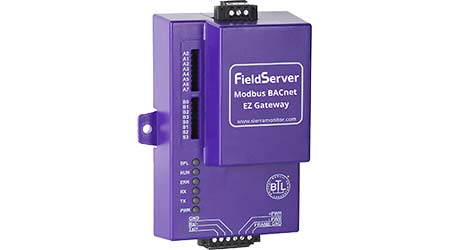« Back to Facilities Management Building Automation Category Home
Sierra Monitor Corp.: IoT Can Integrate Systems With Each Other and a Central Building Management System
November 5, 2015
- Building Automation

Question: What are the benefits of the IoT for building occupants today?
Answer: An IoT-enabled building is a smart responsive building that can improve the building occupant’s comfort and safety, while reducing their energy and other maintenance costs.
A modern building typically uses several discrete systems, often from different vendors, to manage temperature, air flow, lighting levels, access control, power distribution, water reticulation, elevator movement, and so on. An IoT-enabled building integrates these systems with each other, with a central building management system, and with cloud based applications. The benefit to occupants is that these systems become smarter when they work with each other. For example, the recognition of an employee walking into the building by a security access system might inform the elevator system to send an elevator down to take the employee to their office, and the HVAC and lighting systems could be informed to prepare the room to the occupant’s desired parameters. By virtue of integrating these systems into the cloud, the employee might be able to use company-issued smart applications on his smart phone to set their desired policies.
Question: What advantages does IoT technology provide for facility professionals today?
Answer: In addition to improving and personalizing the occupant’s comfort and safety, IoT technology delivers a range of benefits to facility professionals who are responsible for delivering these responsive workspaces to the occupants.
IoT allows facility managers to provide modern, attractive facilities to their occupants while simultaneously reducing the operating costs of the building. Operational savings are achieved through better energy management built around the collection of data from sensors such as occupancy, temperature or light sensors; along with data from external (Internet sources) such as external weather; and coupled with the ability to analyze the data and to control environmental attributes such as temperature, air flow, and lighting. Operational savings are also achieved by lowering maintenance costs. With the data from an IoT-enabled building, a facility manager can identify and schedule preventive maintenance instead of the usual break-fix approach.
Other facility professionals who support the facility manager such as the engineers who design the buildings, or the integrators / contractors who implement various building technologies can take advantage of IoT technologies to “up their game” and to deliver a superior solution to their facility manager customers. That is, IoT can be a source of competitive advantage to facility professionals.
Question: Are the benefits and advantages of IoT technology being realized today, and can you provide a specific example?
Answer: The vision of the responsive building with all its systems integrated and controlled by smart phone applications that are in its occupants pockets is still somewhat an idealized vision. But bits and pieces of this vision are being implemented across many leading facilities. For example, the Empire State Building has a state of the art system that collects energy usage data from meters and uses that for energy management. Levi’s Stadium – home of the San Francisco 49ers – integrates Sierra Monitor’s FieldServer protocol gateways to monitor and control the stadium’s water reticulation and luxury suite’s kitchen energy usage from a centralized building automation system (BAS). This connectivity helped Levi’s Stadium achieve LEED (Leadership in Energy and Environmental Design) Gold certification, a standard rating for the design and construction of ‘green’ buildings. The University of Arizona’s key personnel monitors and manages energy usage and fire alarm panels throughout the campus by using any web-enabled device that connects to the campus SCADA system.
Source: Sierra Monitor Corporation
For more insights on the products, technology, benefits and challenges of the Building Internet of Things, visit www.FacilitiesNet.com/IoT








